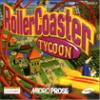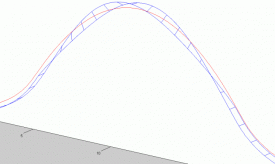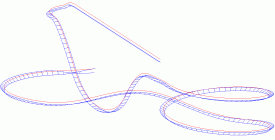(Archive) Advertising District / My most ambitious project to date
-
 08-October 09
08-October 09
-

 Levis
Offline
so I guess you are going to build it in segments and then assembly the whole thing outside?
Levis
Offline
so I guess you are going to build it in segments and then assembly the whole thing outside?
or do you have a sporthall or something like that where you can put it in? -

 BelgianGuy
Offline
This type of project makes me just hurt my jaw from dropping to the floor so hard^^
BelgianGuy
Offline
This type of project makes me just hurt my jaw from dropping to the floor so hard^^
if the layout hasn't been build in real-life maybe try NoLimits wich is a great program if you're attempting a project like this, I've seen a lot of people who make coasterdynamix models make a layout in NL first so they could see the blueprint in all views and even in 3D.
Maybe you could do the same top make things easier. -

 Phatage
Offline
The track is layered rubber, and the expected height is somewhere between 8 & 10 ft. That pic I posted before is just a test sample to see how the building process will go. Right now I'm in the design process, and even though this won't be in the actual design, it does show that my design methods yield reasonable results. This was designed in Excel and plotted with Matlab.
Phatage
Offline
The track is layered rubber, and the expected height is somewhere between 8 & 10 ft. That pic I posted before is just a test sample to see how the building process will go. Right now I'm in the design process, and even though this won't be in the actual design, it does show that my design methods yield reasonable results. This was designed in Excel and plotted with Matlab. -

 Levis
Offline
mmm.....a rubber track is pretty flexible (compared to steel). this means you lose a lot of energy to the track.
Levis
Offline
mmm.....a rubber track is pretty flexible (compared to steel). this means you lose a lot of energy to the track.
I sugest you try to find a material which is as hard (lower E modulus) as you can get it, so you keep the energy.
I'm curious to see the mfile when your done. I work with matlab also and find it a nice program, curious to see how you calculated things like this. -

 Phatage
Offline
The track does not move when the train goes by, the train is barely more than 1 lb and the track is made up of three layers of offset rubber strips glued together, giving it rigidity. Also, a lower Young's modulus doesn't imply a more rigid material; steel's E is considerably higher than that of rubber. In terms of the code, most of the design is actually calculated in a (very large) excel spreadsheet, and the .m file is just used to plot the track in 3d.
Phatage
Offline
The track does not move when the train goes by, the train is barely more than 1 lb and the track is made up of three layers of offset rubber strips glued together, giving it rigidity. Also, a lower Young's modulus doesn't imply a more rigid material; steel's E is considerably higher than that of rubber. In terms of the code, most of the design is actually calculated in a (very large) excel spreadsheet, and the .m file is just used to plot the track in 3d.
Speaking of plotting the track in 3d, below just gives more of an idea of what the layout is shaping up to be like, something not confined by the bounds of rct's track design system. -

 Phatage
Offline
Essentially it is the heartline, although in this case specifically it is the accelerometer-line that will be used to assess how accurate the design calculations were.
Phatage
Offline
Essentially it is the heartline, although in this case specifically it is the accelerometer-line that will be used to assess how accurate the design calculations were. -

 Phatage
Offline
In case anybody was wondering about the outcome of this project, see attached.
Phatage
Offline
In case anybody was wondering about the outcome of this project, see attached.Attached Files
-
 E90_Final_Report.pdf (5.23MB)
E90_Final_Report.pdf (5.23MB)
downloads: 407
-
-

 Six Frags
Offline
Especially the history was a fun read, well done on this project. What mark did you get?
Six Frags
Offline
Especially the history was a fun read, well done on this project. What mark did you get?
SF -

Rhynos Offline
So, I gotta ask, did you end up building a model that looped around and followed through or were there just pieces of track for your models? Those pieces look pretty intense, as far as professional skills and calculations go. Impressive, overall. -

 Evil WME
Offline
Wow cool. What exactly was this for?
Evil WME
Offline
Wow cool. What exactly was this for?
I will want to give this a more intensive read. I don't know how I feel about the amount of history you included and talking in "I" is far from academic. Nonetheless, looks interesting.
Latex for the win :).
I'm surprised you did things in Excel, wouldn't it have been easier to use Matlab for everything? Or R or something? Though I haven't found out exactly what you did.. so possibly I'd get that on my own ;). -

 Phatage
Offline
Thanks, I got an A on it. Even if you don't think you understand it, I still think you will get something out of reading it, if not just for the relevant history bit. I guess some terminology may be a little field-specific but for the most part, I think most people who give it a solid read should be able to take away most of what was said.
Phatage
Offline
Thanks, I got an A on it. Even if you don't think you understand it, I still think you will get something out of reading it, if not just for the relevant history bit. I guess some terminology may be a little field-specific but for the most part, I think most people who give it a solid read should be able to take away most of what was said.
I didn't actually get to build a larger model because I couldn't get the friction down enough to make it a feasible project. A lot of this was due to the difficulties aligning the rubber rails with each other, but I still don't regret using the rubber as I think it was the best option I had. If the Rocky Mountain company that makes the prefab woodie track were to make something on my scale, things would be different
This report was for my final college engineering project, and I used the first person because I didn't want it to be purely aimed toward academia (my professor agreed with this). I did think about using Matlab but in the end, I found Excel to be better for me because I could monitor and debug things a whole lot easier. Running something through a function that modifies a giant, growing matrix (essentially a spreadsheet) would be how I would do it in Matlab, which would really just be an interface to interact with the spreadsheet, something I thought I didn't need. If anybody has used No Limits Elementary with the FVD formulas, using Matlab would be pretty much like that which is something I didn't want.
The layout towards the end (you may recognize it beginning to form the layout at the beginning of this topic) is something I'm still working on and I hope to devote a whole new section in my paper to it when it's finished.
 Tags
Tags
- No Tags









